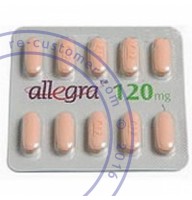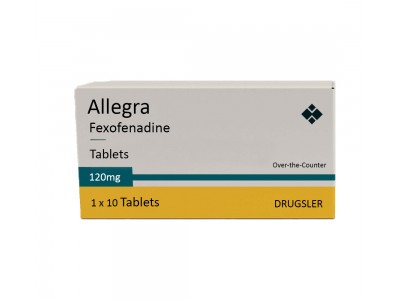When using Allegra (Fexofenadine) for allergy relief, understanding how to properly store the medication is crucial to maintaining its effectiveness. Incorrect storage can lead to reduced potency, which could affect your treatment. This article will guide you on the best practices for storing Allegra, including temperature ranges, shelf life, and other essential factors.
What is Allegra (Fexofenadine)?
Allegra (Fexofenadine) is an antihistamine medication commonly used to treat symptoms of seasonal allergies, such as runny nose, sneezing, and itchy or watery eyes. It works by blocking the effects of histamine, a substance in the body that causes allergic symptoms. As with all medications, proper storage is essential to ensure its efficacy and safety.
Where Should You Keep Allegra (Fexofenadine)?
Proper storage of Fexofenadine is important to maintain its effectiveness. The best place to store Allegra is in a cool, dry place away from heat and humidity. It is recommended to keep it in the original packaging to protect it from light and moisture. A bathroom or kitchen cabinet is often a suitable location, as long as it is not in close proximity to heat sources like stoves or radiators.
Can Allegra (Fexofenadine) Be Stored in the Fridge?
No, Allegra (Fexofenadine) does not need to be refrigerated. In fact, storing it in the fridge is not necessary and could potentially expose the medication to moisture, which may degrade its quality. Storing Allegra at room temperature, typically between 20°C to 25°C (68°F to 77°F), is optimal for preserving its effectiveness.
Allegra Temperature Storage Range
The temperature range for storing Allegra is important for maintaining its potency. As previously mentioned, it should be kept at room temperature. Avoid storing it in extreme heat or cold, as both can affect the active ingredients. High temperatures, such as those experienced in a car during summer, can cause the medication to lose its efficacy.
What is the Shelf Life of Allegra?
The shelf life of Allegra (Fexofenadine) is typically 2 to 3 years from the date of manufacture, as long as it is stored correctly. Always check the expiration date on the packaging to ensure that you are using the medication within the recommended time frame. After the expiration date has passed, the medication may no longer be effective and should be discarded.
How to Store Allergy Medications
When storing allergy medications like Allegra, it is important to consider the temperature, light, and moisture exposure. Always follow the instructions provided on the medication's label or package insert. For instance, some allergy medications may require refrigeration, while others, like Allegra, should be kept at room temperature.
Does Allegra Need to Be Refrigerated?
No, Allegra should not be refrigerated. Storing it at room temperature, away from moisture and excessive heat, will help ensure its maximum shelf life and potency. Avoid storing the medication in areas where it can be exposed to direct sunlight or in places that get too hot, like a car.
Other Important Storage Instructions for Allegra
Aside from temperature, it is also crucial to store Allegra in a safe location where it cannot be accessed by children or pets. Always keep the bottle tightly closed to prevent contamination. Additionally, do not use Allegra if the packaging is damaged or the medicine appears discolored or has an unusual smell.
Conclusion: Best Storage Practices for Allegra
In conclusion, proper storage of Allegra (Fexofenadine) is essential to maintaining its effectiveness. Always store it at room temperature, in a cool, dry place, away from moisture, heat, and light. Avoid refrigeration and extreme temperatures to preserve its potency. By following these simple guidelines, you can ensure that your Allegra remains safe and effective for treating your allergy symptoms.

